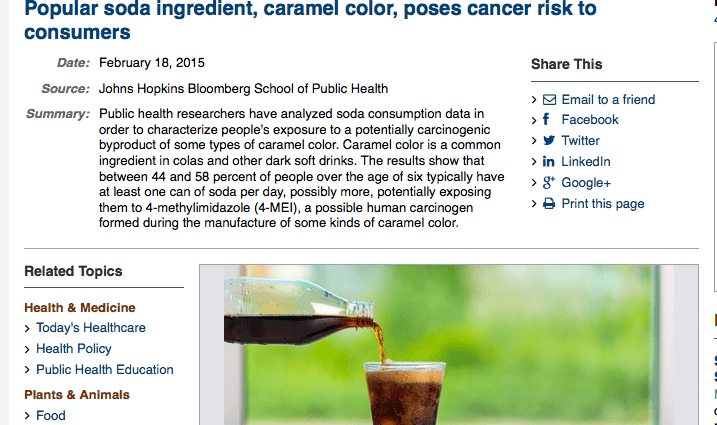According to statistics, more than 75% of Russians drink sweet soda from time to time, and the consumption of carbonated drinks is approaching 28 liters per capita per year. If you sometimes reach for some cola and similar drinks, it means that you are exposing yourself to 4-methylimidazole (4‑MEI) – a potential carcinogen formed during the production of some types of caramel dye. And caramel color is a common ingredient in Coca-Cola and other dark soft drinks.
Public health researchers have analyzed the effects on humans of a potentially carcinogenic byproduct of certain types of caramel coloring. The research results are published in PLOS One.
Concentration analysis data 4‑MEI in 11 different soft drinks were first published in Consumer Reports in 2014. Based on this data, a new group of scientists led by a team from Johns Hopkins Center for a Livable Future (CLF) assessed the impact 4‑MEI from the caramel color found in soft drinks and has modeled the potential cancer risks associated with consistent consumption of carbonated drinks in the United States.
It turned out that consumers of such soft drinks are at unnecessary risk of cancer due to the ingredient that is added to these drinks simply for aesthetic reasons. And this risk can be prevented simply by avoiding such soda. According to the authors of the study, this exposure poses a threat to public health and raises the question of the possibility of using caramel color in carbonated drinks.
In 2013 and early 2014 Consumer Reports in partnership with CLF analyzed the concentration 4‑MEI 110 soft drink samples purchased from retail stores in California and New York. The results show that the levels 4‑MEI can vary significantly depending on the brand of the drink, even among the same type of soda, for example, among samples of Diet Coke.
These new data reinforce the belief that people who consume large amounts of carbonated drinks unnecessarily increase the risk of developing cancer.










